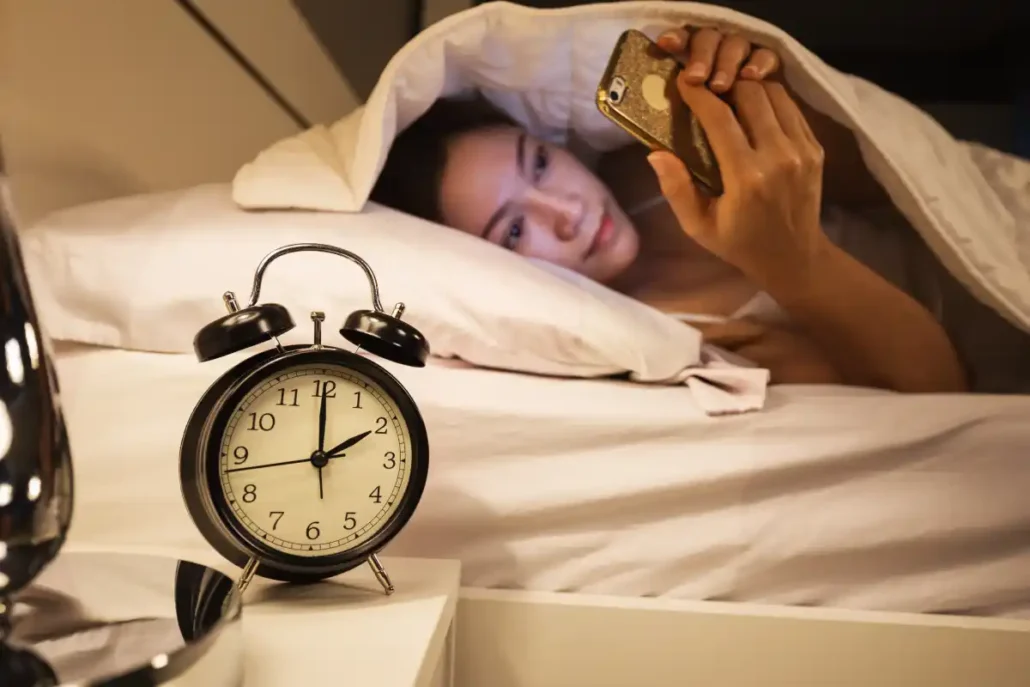Is there a connection between sleep and facial wrinkles? Your nightly skincare routine doesn’t stop when your head hits the pillow. In fact, as you drift into dreamland, your sleep position is impacting the health and appearance of your skin, even possibly contributing to premature wrinkles.
Learn more about the relationship between sleep positions and facial wrinkles, including a few tips for minimizing sleep-related wrinkles while maintaining healthy sleep habits so you can wake up feeling (and looking) refreshed and rejuvenated every morning.
Facial Wrinkles & Sleep
Wrinkles are a natural part of the aging process, but they can also be influenced by a variety of other factors, including sun exposure, genetics, and lifestyle choices. However, one of the least expected factors to facial wrinkles is the way you sleep, especially the position you sleep in—brace yourself, stomach sleepers, your preferred sleeping position may have more of an impact on your skin than you realize.
Does Sleeping on Your Face Cause Wrinkles?
Sleeping in certain positions night after night can contribute to wrinkles, particularly around the face and neck, due to the combined effects of gravity, pressure, and repetitive movements during sleep. To better understand how different sleep positions can impact your skin and wrinkles, let’s explore three common sleep positions—back, side, and face—and their effects on your skin health and facial wrinkles.
Back Sleeping Wrinkles
Sleeping on your back is frequently hailed as the best position for “preventing” wrinkles. The idea is that when you sleep on your back, your face is free from direct contact with the pillow, reducing the chances of sleep-induced creases that can lead to wrinkles. This position also helps distribute the weight evenly, minimizing pressure on specific areas of your face and further preventing sleeping lines.
Side Sleeping Wrinkles
While 60% of adults report that they prefer sleeping on their sides, this position can often contribute to the formation of sleep wrinkles. The pressure and friction between your face and the pillow can cause sleep lines and creases to form over time. If you’re a side sleeper who favors one side over the other, you may notice that your sleep wrinkles are more prominent or noticeable on your preferred sleeping side.
Stomach Sleeping Wrinkles
Sleeping on your stomach is the position most likely to cause sleep-induced wrinkles. When you bury your face into the pillow, you expose your skin to prolonged pressure and compression. Over time, this can result in facial lines and wrinkles. If you’re a stomach sleeper, it might be time to consider transitioning to a different sleep position.
5 Tips for Minimizing Sleeping Wrinkles
Now that we’ve explored the connection between sleep positions and wrinkles, let’s discuss some practical tips to help you wake up looking and feeling more refreshed:
-
Rethink Your Pillow
Choosing the right pillow can make a big difference in preventing sleep wrinkles. Look for pillows that provide ample support and help maintain the natural alignment of your head, neck, and spine. Memory foam or contoured pillows may help reduce pressure points on your face, minimizing the risk of sleep-induced creases.
In addition to selecting the right pillow, using a silk or satin pillowcase could be beneficial for minimizing sleep-induced wrinkles. Unlike cotton, silk and satin cause less friction against the skin, reducing the chances of developing creases and lines.
-
Switch Sleep Positions
Switching up your sleep position can be a powerful strategy in the battle against sleep-induced wrinkles. It’s no easy feat to switch the way you sleep, but making these adjustments can help reduce your chance of sleep-related wrinkles forming and promote smoother, more youthful-looking skin. Here are some suggestions for how to sleep to avoid sleep wrinkles:
- Embrace Back Sleeping: If you can comfortably sleep on your back, this position is your best bet for avoiding sleep wrinkles altogether. To enhance your back sleeping experience, consider placing a soft pillow under your knees to support your lower back and promote spinal alignment.
- Train Yourself to Side Sleep Smartly: If side sleeping is your preferred position, you can adopt a few strategies to minimize sleep-induced wrinkles. Start by using a body pillow to support your upper arm and leg, reducing pressure on your face. Additionally, try alternating sides each night to distribute the pressure more evenly.
- Break Free from Stomach Sleeping: While breaking the habit of stomach sleeping can be challenging, you might feel it’s worth the effort to prevent sleep wrinkles. Begin by gradually transitioning to side or back sleeping positions. Experiment with different pillows and find one that discourages stomach sleeping. Over time, you’ll adjust to a new position that’s gentler on your skin.
-
Elevate Your Head
Using an adjustable bed can help prevent fluid accumulation and reduce puffiness around the eyes, minimizing the appearance of wrinkles in the morning.
Fluid accumulation and puffiness around the eyes can contribute to the appearance of wrinkles, particularly in the delicate eye area. Elevating your head while you sleep can help prevent fluid retention and reduce morning puffiness.
-
Get Sufficient Sleep
Establishing a consistent sleep routine and ensuring you get enough sleep can promote overall skin health. Getting enough quality sleep helps your body to repair and regenerate and promotes healthy blood flow, supporting the production of collagen and minimizing the appearance of wrinkles.
To prioritize sufficient sleep, establish a consistent sleep routine by going to bed and waking up at the same time each day. Aim for the recommended amount of sleep according to your age and individual needs, which typically ranges from 7 to 9 hours for adults. By allowing your body to get enough quality, restorative sleep, you can wake up feeling refreshed and energized, with a radiant glow that shines through, helping you look and feel your best throughout the day.
-
Invest in a Quality Mattress
The quality of your mattress can significantly influence not only the quality of your sleep but also the appearance of sleep wrinkles on your skin. Investing in a high-quality mattress is essential for maintaining optimal sleep conditions and minimizing the risk of sleep-induced wrinkles. Here’s how choosing the right mattress is essential for achieving a restful night’s sleep and promoting smoother, more youthful-looking skin:
- Proper Spinal Alignment: A supportive mattress ensures proper alignment of your spine, which is vital for minimizing tension and strain on your muscles and skin. When your spine is correctly aligned during sleep, there is less likelihood of developing sleep lines and wrinkles caused by excessive pressure or unnatural positioning.
- Pressure Distribution: A high-quality mattress helps distribute your body weight evenly, reducing pressure points on your skin. By relieving pressure, you can minimize the risk of deep creases and lines forming as a result of prolonged contact between your body and the mattress.
- Comfortable Sleep: Comfort is key to a good night’s sleep, and a comfortable mattress can help you achieve that. When you’re comfortable, you’re less likely to toss and turn, which can contribute to friction and the development of sleep wrinkles. A comfortable mattress supports uninterrupted sleep, allowing your skin to rejuvenate and recover during the night.
When selecting a mattress, consider factors such as firmness level, material quality, and durability. Choose a mattress that provides the right amount of support for your preferred sleep position and promotes proper spinal alignment. Do your research, as many mattresses promote their supportive and pressure-relieving properties.
Conclusion
Sleep plays a vital role in the health and appearance of your skin. Being mindful of your sleep habits can help you minimize sleep-induced wrinkles and wake up feeling and looking rejuvenated. Whether it’s adjusting your sleep position, investing in a supportive mattress or pillow, or prioritizing sufficient sleep, small changes can make a big difference.




